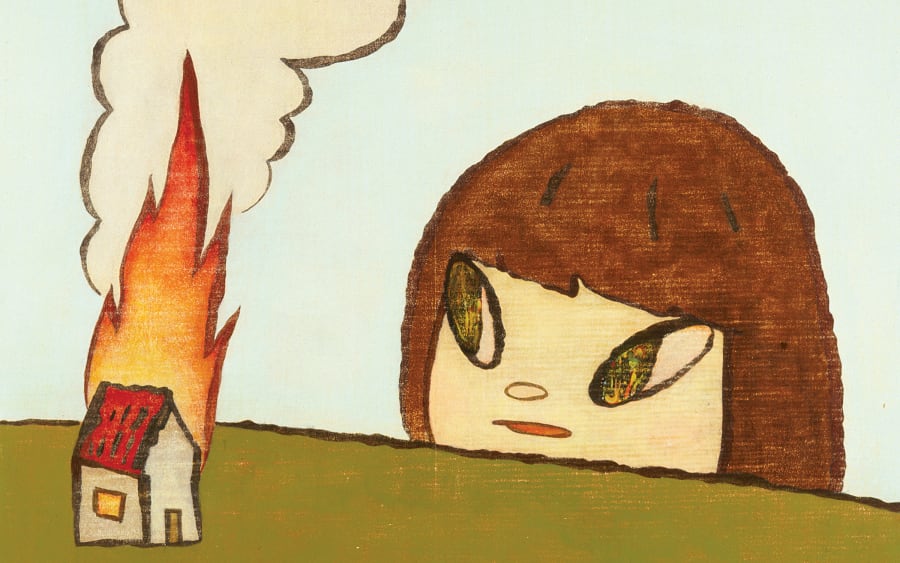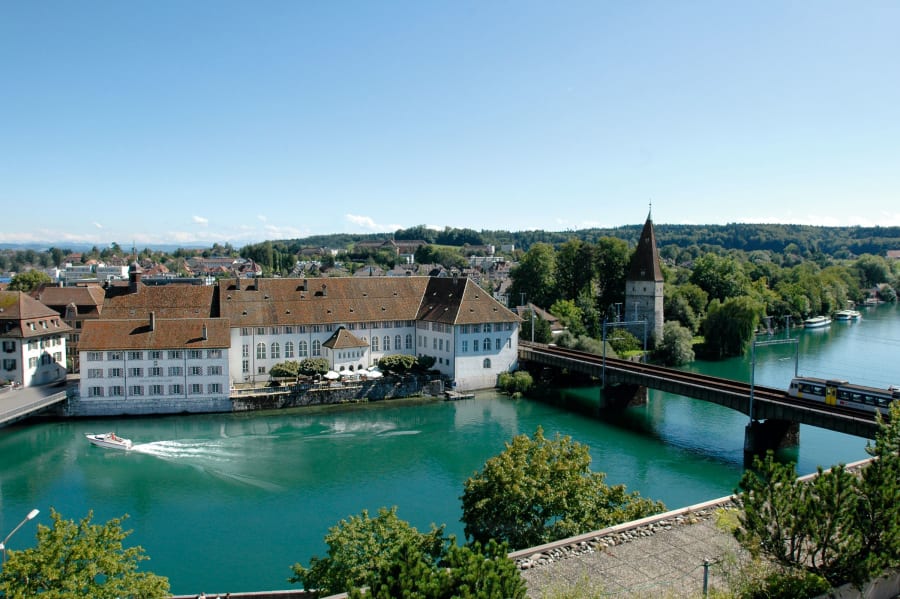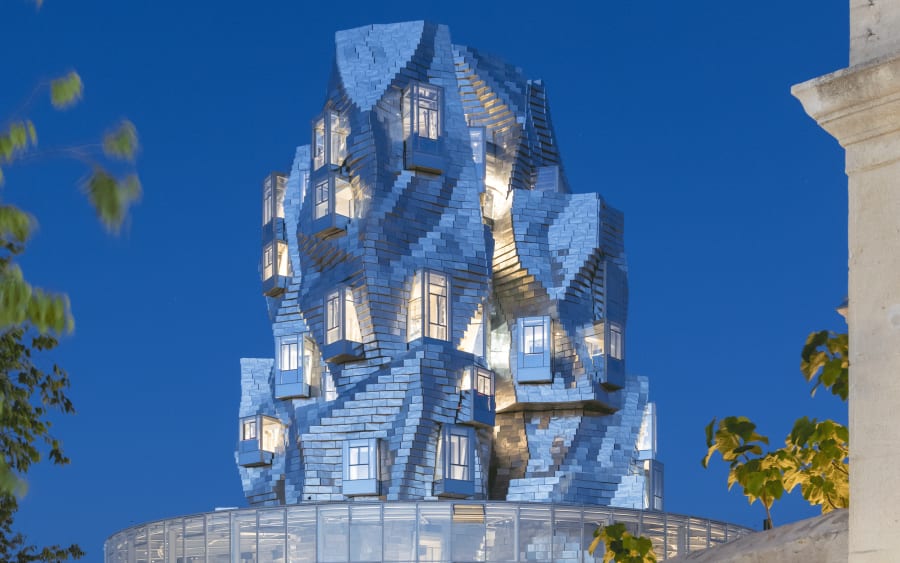When Italians say make yourself at home, they really mean it. The extent to which the country’s institutions, artists, collectors, cultural organizations, and even hotels have initiated residency programs should therefore come as no surprise. And yet, there is no exhaustive listing or centralized network to browse the many opportunities for residencies in the Bel paese. But fear not: Art Basel has compiled a list which, while not exhaustive, showcases some of the most worthwhile opportunities under the Italian sun.
In the medieval town of Biella, nestled at the bottom of the Piedmontese alps, Fondazione Pistoletto Cittadellarte has been offering residencies through the UNIDEE program since 1999. The residency was founded by Michelangelo Pistoletto (b. 1933), one of Italy’s most revered contemporary artists. The so called ‘artivators’ are hosted in the large spaces of a former textile plant, and involved in workshops and community activities that focus on sustainability, ecology, and participation. A similar take, shaped by environmental advocacy and the sea, is the inspiration for the Venice residency program of TBA21–Academy called Ocean Space – a research center and exhibition space created by philanthropist and art patron Francesca Thyssen-Bornemisza. The program has been held in the spectacular Renaissance church of San Lorenzo in the heart of Venice since 2019.
Both institutions organize open calls, yet also run residencies upon invitation parallel to their exhibition calendar. Located in the picturesque town of Orani on the island of Sardinia, the Museo Nivola operates in a similar way. On the occasion of its 30th birthday, the museum – which honors the Italian-American artist Costantino Nivola (1911–1988), who fled the fascist politics of his native country – is opening a brand-new pavilion dedicated to residents, blending modernist architecture with local stonemasonry. Here, resident artists will be offered both a studio and a home, alongside the unique opportunity to partner with local artisans and learn more about the island’s wild flora.
For a more urban experience, Matteo Corbellini and Allina have recently transformed a body shop near ICA Milano and Fondazione Prada in Milan’s edgy Porta Romana neighborhood into a sophisticated, minimalist venue. Villa Clea features three entirely modular spaces that can become apartments or exhibition galleries as needed, and which also feature a courtyard and storage area. Since 2023, it has hosted international artists who want to research or network in the design and fashion capital of Italy. The residency can last one to three weeks and involves some form of presentation in town, or a local collaboration, such as Jan Melka’s performance in conjunction with fashion house Jil Sander.
In the Encounters sector, dedicated to large-scale installations, Kim’s gallery reintroduced the late Filipino artist Pacita Abad’s practice to an Asian audience with Through the Looking Glass (1996); the monumental installation sold to a museum in Southeast Asia for USD 500,000. Also in Encounters, three works by the First Nations artist Betty Muffler were sold by Ames Yavuz (Singapore, Sydney, London), all in the range of USD 40,000–60,000, and Property Holdings Development Group (Hong Kong) sold a piece by Christopher K. Ho to a major corporate collection. De Sarthe (Hong Kong), meanwhile, saw great success with NFTs and editions by the Chinese artist Lu Yang’s digital alter ego, Doku. The acquisition of Yang’s all-encompassing Encounters installation – DOKU the Creator (2025) – was being negotiated, with multiple institutions expressing strong interest, but the sale had not yet been confirmed at the time of publication.
Despite some trepidation in the international market, sales to institutions and collections abroad made a strong return this year. The Chinese space Star Gallery (Beijing) sold Zhang Wei’s oil-on-paper Jingshan Front Street, Beijing (1974) for USD 11,050 to the Tate Modern. San Francisco’s Jessica Silverman gallery sold two new pieces by the Indian artist Rupy C. Tut for USD 40,000 each, with one going to a Bay Area institution. And the Bologna gallery P420 sold five historical works by the German Italian artist Irma Blank to private collections in Hong Kong, China, Italy, Germany, and Colombia, with prices ranging from USD 8,500 to USD 32,000.
For diverse reasons other residencies in Italy are seasonal. In Tuscany, TaC – Torre Al Cerro is located on the rural family estate of Filippo Formenti, an Italian art advisor and collector based between London and Milan. A few years ago, Formenti revived a timeless form of patronage: hosting two emerging artists in summertime, showing them the area, and taking them to the renowned Palio horse race in Siena. They are not required to do anything specific besides leaving a trace of their presence in the house; it is a residency and a holiday, and has continued through email and word of mouth.
Nearby, in the Umbrian architectural jewel that is the town of Spoleto, the Mahler & LeWitt Studios runs four fully-funded residency sessions per year. Those unfolding in summer overlap with the famous classical music event Festival dei Due Mondi. There are three venues: the former studio spaces of Anna Mahler (1904–1988), sculptor and daughter of Austrian composer Gustav Mahler and his wife Alma; the studio of conceptual artist Sol LeWitt (1928–2007); and the Torre Bonomo, a medieval tower once used as a residency and exhibition space by Italian gallerist Marilena Bonomo (1928–2014), who actually introduced LeWitt to Spoleto. The program, directed by NYC-based artist Eva LeWitt and curator Guy Robertson, runs on open calls and collaborations with prestigious institutions such as Yale University, King’s College London, and the Fondazione Carla Fendi, which also has a space in the square in front of the duomo. There is no obligation for residents to produce work; what matters to the directors is that the visiting artists engage with locals and offer them a window into their practice.
On the cinematic Amalfi coast, Marea Art Project is a residency that unfolds across the towns of Praiano and Positano from November to March. Residents are invited to stay in villas and townhouses with splendid ocean views and their own distinctive styles. For example, one of them is the home of Carol LeWitt, the widow of Sol, and is decorated with original artwork by the late American minimalist. Marea Art Project was founded by Roberto Pontecorvo and Imma Tralli, and the advisor is Stefano Collicelli Cagol, director of Centro per l’arte contemporanea Luigi Pecci in Prato. ‘For over a century, this community of fishermen and farmers welcomed artists and intellectuals seeking freedom, but this anti-conformist wave suddenly stopped 30 years ago, as tourism grew out of control,’ recounts Pontecorvo. Today, a ‘Marea effect’ is restoring that history by bringing artists back into the heart of the Amalfi Coast and providing an authentic connection with the local community.
Finally, the most official channels through which to hone your craft at a residency in Italy are the state-financed offerings in Rome. The first to open, in 1666, was the august French Academy – Villa Medici, still overlooking the extraordinary Eternal City from Villa Borghese. Today, numerous countries also host programs somewhere in the city, among them Switzerland, Poland, Germany, and the US. Most of them require an application, while others are upon invitation; either way, opportunities are many, prestigious, and open all year around.
Sara Dolfi Agostini is a writer, curator, and academic based between Naples and Malta.
Caption for top image: Casa Eugenia, part of the network of residencies of Marea in Positano. Courtesy of Marea Art Project.


